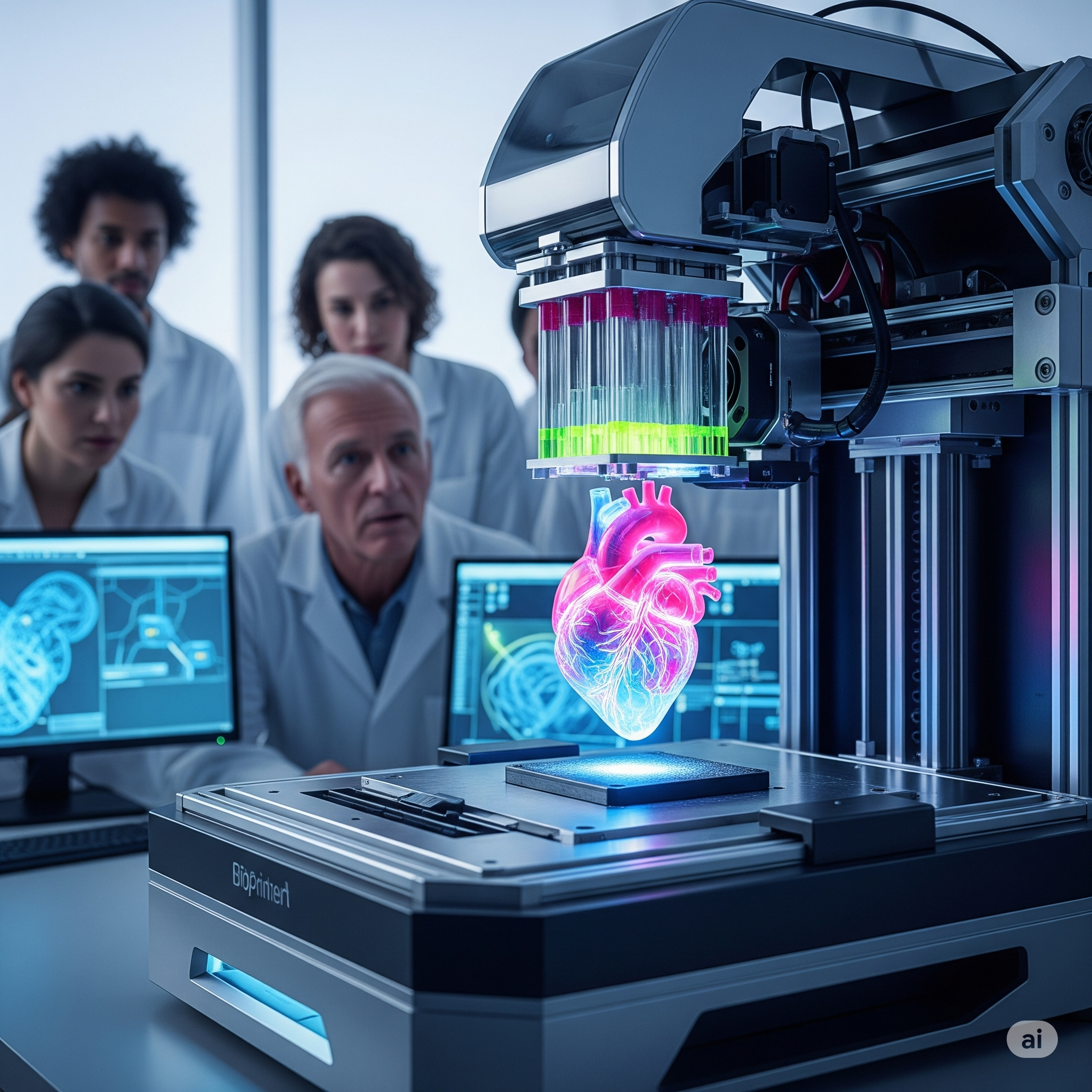What’s the Breakthrough?
Researchers at Texas University have unveiled a cutting-edge 3D bioprinting technique that could redefine how we treat organ failure. Using specially developed bio-inks and electronic printing tools, scientists can now create human-like organs that replicate:
- Strength
- Flexibility
- Cellular behavior
This advancement aims to ease the global burden of organ shortages and transplant delays.
🧫 The Science Behind 3D Bioprinting
Unlike traditional 3D printing, bioprinting uses living cells, biomaterials, and biocompatible scaffolds. The organs are constructed layer by layer to imitate real human tissue.
Components Used:
- Bio-inks: Composed of stem cells, growth factors, and biocompatible gels
- Smart Inks: Responsive to electrical and chemical cues, mimicking natural organ behavior
- Advanced Layering: Each printed layer adjusts in density and porosity to match organ function
“It’s not just about shape—it’s about function and interaction with the body,” says Dr. Anika Bose, a regenerative medicine specialist.
🫀 Which Organs Can Be Printed?
The research team has successfully replicated critical biological structures like:
- Heart Tissues: Mimicking pumping action
- Kidneys: Simulating filtration functions
- Cartilage: For orthopedic and dental implants
- Vascular Networks: Including blood vessels essential for organ survival
The organs are still in pre-clinical testing but have shown promising viability in lab environments.
🌍 Why This Matters Globally
1. Transplant Shortages:
According to the WHO, over 1 million people die annually waiting for organ transplants.
2. Cost & Accessibility:
Traditional transplants are expensive and limited by donor availability. 3D printed organs may significantly reduce both waiting time and cost.
3. Rejection Rates:
Using patient-derived cells may reduce the chances of transplant rejection and the need for lifelong immunosuppressants.
🧪 Indian Context: Why This Tech Is Crucial Here
India faces acute shortages in organ donations. In 2023 alone, the country had over 150,000 people on organ waitlists, with only 5,000 transplants conducted.
This tech could:
- Offer affordable solutions for rural and urban India
- Encourage biotech investment and job creation
- Reduce dependency on black-market organs
🔬 Challenges Ahead
- Ethical Questions: Are we ready for lab-grown organs?
- Long-Term Viability: Need for clinical trials and real-life testing
- Regulatory Hurdles: Approvals from medical bodies like the FDA, ICMR, etc.
However, the global scientific consensus views 3D bioprinting as a cornerstone of regenerative medicine for the next decade.
🔭 The Future Outlook
- Bio-banks could print organs on demand using patient DNA
- AI-driven printing precision may enhance accuracy and reduce errors
- Hybrid organs—part machine, part biological—may serve specific health conditions
“In 10 years, printed organs could become as common as prosthetics today,” predicts Prof. Arvind Mehta, a biotech researcher from IIT Delhi.
🌱 Final Thoughts: Printing Hope
What once seemed like science fiction is now engineering biology with purpose. 3D printing human organs could end the long wait for life-saving transplants and democratize access to complex surgeries.
The next frontier? Turning innovation into accessible healthcare.









+ There are no comments
Add yours